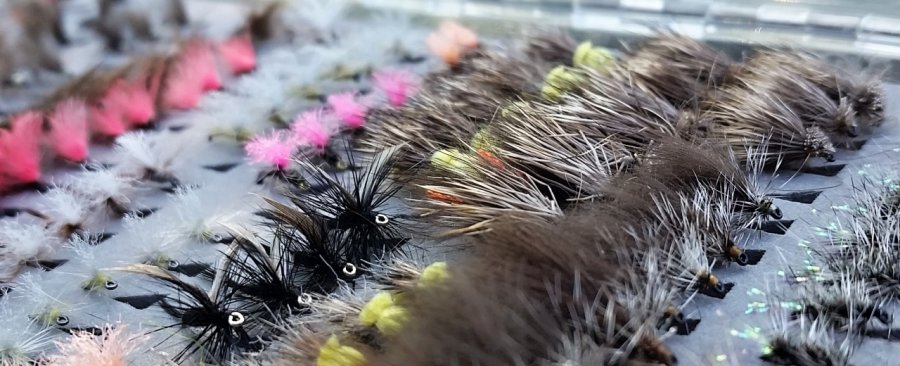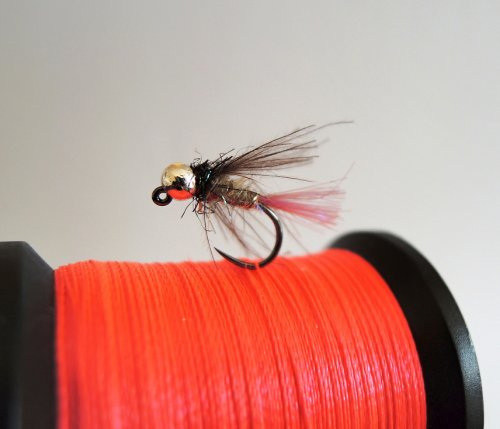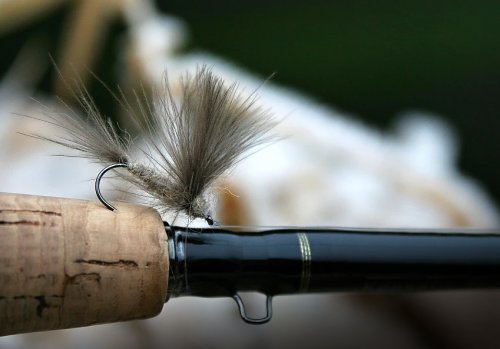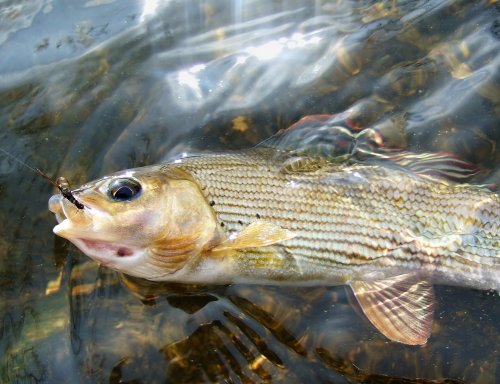If you want to successfully fish for often very picky grayling, you must have - in addition to the right tactics and fly fishing techniques - of course also the right and for graylings trustworthy artificial fly! In this article, you will learn what types and specific types of flies can be used for very effectively grayling fishing! Do not hesitate - TOP grayling flies are here!

As mentioned in the introduction, grayling are often very food picky! If you want to be successful in their hunt, it is necessary to sufficiently prepare for their refined appetite and equip your fly box with all suitable types and patterns of artificial flies, even in the smallest possible sizes, because if the grayling decides to rise for a miniature mayfly corresponding to the size of hook 22 from the surface, then you probably won't catch them on Goddard on the eight size hook... Although! ;-)
Each fish has a slightly special selection and size of artificial flies. For grayling, we certainly know this selection we can deprive of streamer patterns. In Scandinavia or Mongolia (Arctic grayling), "predatory" grayling are commonly fished on streamers, but in our territory we can easily omit this type of fly, because it is definitely not the type of flies on which graylings would be fished!

So we will focus our attention primarily on various nymphs, small dry flies and very often even smaller wet flies will come next! So let's talk more about these groups of flies and imagine the main and indispensable patterns of these main groups of grayling flies!
NYMPHS: Nymph patterns, or mostly imitations of larval stages of insects (caddisflies, mayflies, stoneflies) and invertebrates of aquatic insect (freshwater shrimp, hoglouse) are often the best / most effective flies for grayling, as they are mainly caught near the river bottom where grayling occurs and mostly feeds. Therefore, in cases where grayling are not active at the surface or in the water column, it is best to persuade them tostrike with various species of nymphs drift near the bottom!
For a long time, the most effective nymphs for grayling were by lead wire heavily loaded Czech Nymphs. These are specific "larval" patterns that either imitate animals commonly living at the bottom of the river bed - freshwater shrimps, caddis larvae, or hoglouse, or can be based on a fantastic basis, and tied in a variety of color variants and, for example, additional loading tungsten bead in the area of the head or chest/heart - Disco Czech Nymphs. With this species of nymphs, it is possible to fish on larger sizes (8-12), especially large grayling are relatively willing to accept them. Favorite colors are natural, cream, pink, but sometimes really bright colors!
Another type of very effective grayling nymphs are Tungsten Jigs and Tungsten Nymphs, which are - especially today - very popular, mainly due to their relatively simple and fast tying and very easy loading of the fly using tungsten beads of different weights, shapes and colors! As a result, flies are very heavy, but small and very subtle, and they reach the riverbed more easily than other patterns - even through a strong river current! This type of nymphs also include the so-called Perdigon Nymphs, which are a perfect example of the fact that fish not only react purely to faithful imitations of their natural food, but sometimes they also eat something indeterminate and very colorful!
I would like to dwell here for a moment on the topic of grayling vs. pink color! Surely you have noticed that a lot of artificial flies intended for grayling fishing are in various shades of pink, which graylings are said to be very popular with. We will see if even grayling finds today's gender supporters in this unproven sexist prejudice! I don't believe in this alleged sympathies of grayling for the pink color, but especially in the autumn season, grayling fishing on pink flies has been a pleasant tradition, so why destroy it? 😉
Výsledky překladu

As other nymph patterns that are effective in fly fishing for grayling, we can certainly name relatively large imitations of so-called cased caddis and other types of Caddis Larvae (Rhyacophila, Hydropsyche). Furthermore, you can fish with great success with imitations of Freshwater Shrimps, or for traditional patterns imitating mostly Mayflies Nymphs and smaller Stonefly Nymphs. Furthermore, loaded versions of Pheasant Tail Nymphs (PTN) or Hare's Ears (HE), with which we fish mainly grayling, which are active in the water column.
Anyway, it's always good to find out what aquatic insects are mostly found in the river and try to imitate them either with a specific pattern, or at least with its color and size!
DRY FLIES: In the case of dry flies intended for grayling fishing, this is another - as I like to say - "fly fishing endemic", because the basic parameter is their size, which usually has to be really small! So forget about the foam imitations of Terrestrials, with which you fished for insatiable chub during the summer with great success! Now you have to prepare a fly box with much smaller imitations of Winged Dry Flies in the form of fine mayflies, Klinkhammers, adult midges, Shuttlecocks, tiny Caddis & Sedge flies, small Parachutes and indefinite small palmers, Hackled Dries and more "grayling dusters" often in the smallest possible sizes!

If grayling make "rings" on the water surface, try to identify mainly the size and color of the insects that grayling are feeding on and try to find the best and suitable imitation of a dry fly from your box!
WET FLIES: When fishing for grayling, wet flies come next when, for example, you see the surface activity of fish, but you can't outsmart them on dry flies (if you do everything else correctly, of course), or you know about the occurrence of grayling in the part of river, but grayling do not want nymphs at the bottom. In such cases, it is good to try the traditional technique of fishing for salmonid fish - a wet fly fishing method with classic wet patterns imitating drowned insects - such as Greenwells Glory, Coachman, March Brown, Iron Blue Dun. , or with fine spiders (Northern Spiders) such as Spider Partridge & Orange, Snipe & Purple, Greenwells Spider, Spider Hare Lug & Partridge.
However, in the case that you are still not very familiar with artificial flies, or you don't have your own patterns and you don't want to choose from an extensive offer of individual flies, I have prepared a unique selections of grayling flies for you, with which you will definitely not step aside:
◼ MUST HAVE Grayling Flies - Fly Selection
◼ TOP River Grayling Killers - Fly Selection
◼ Universal CDC Dry Flies - Fly Selection
If you can't outwit any grayling with any type of artificial fly, all you have to do is think about whether you're doing everything right in other ways! As you all know, a guaranteed fly that would catch fish always and everywhere DOES NOT exist - if you had no idea so far, welcome to reality! 😏
What is always more important than the fly itself is the style of its controlling and especially your approach to the fish itself - tactics and the right choice of fishing technique corresponding to the current conditions. It is also very important if you use the right equipment when fishing - a suitably chosen category of rod and line - which can spook fish, for example (cumbersome presentation of a fly). E.g. the diameter of the leader is also very important, as it can be too strong for fish = visible, or your whole set pulls the fly, thanks to which it does not look natural, etc.
⭐ There are many of these success/failure factors, which is why I highly recommend you to read my other related articles from my FLY FISHING SPECIAL, in which I comprehensively focus on grayling fishing with fly fishing equipment:
➡ FLY FISHING FOR GRAYLING - THE RIGHT FISHING TACTICS & TECHNIQUES FOR GRAYLING
➡ FLY FISHING FOR GRAYLING - TACKLE & EQUIPMENT FOR GRAYLING FISHING
























